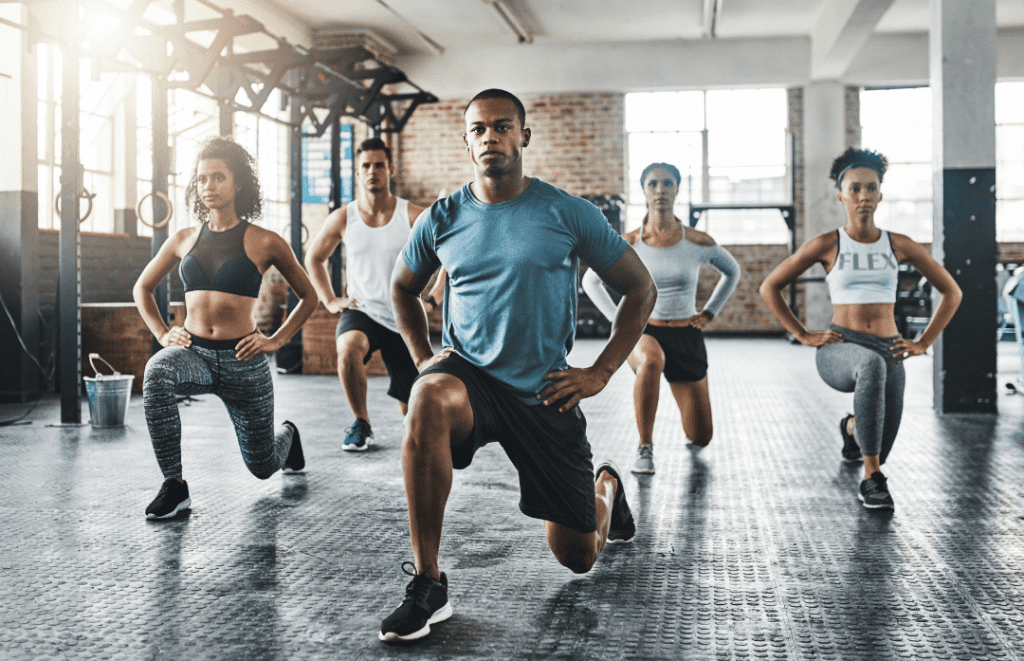Question: What is everyone’s favorite workout day to hate? Chest day is beloved by all.
Back and biceps show off your impressive posterior chain. So what is it?
Leg day.
Of course. Who wants to expend so much energy developing your lower body?
Common leg exercises hurt like crazy, you can’t walk the next day, and, before you know it, they’re thick as tree trunks, which wasn’t your intention at the beginning.
However, leg day doesn’t have to be hell. In fact, you can utilize leg day to help accomplish your athletic goals.
When you do this, you can actually enjoy leg day and all it has to offer.
One specific exercise that should be part of any unique and beneficial leg workout is the bodyweight lunge.
Bodyweight lunges are fundamental from both a strength and a physiological standpoint; it would do you some good to master the lunge in its most natural state.
In this article, we’ll go over what bodyweight lunges are, how to set up for the exercise, how to alter the difficulty for progressive overload, and the benefits of even doing lunges.
Plus, we’ll get into which muscles lunges work, as well as bodyweight lunge alternative exercises if they aren’t your cup of tea.
Let’s lunge into it! (So long as we go deep… reeeaaallly deep…)
Read Also: How to use box jump workouts to level up your fitness
What Are Bodyweight Lunges?
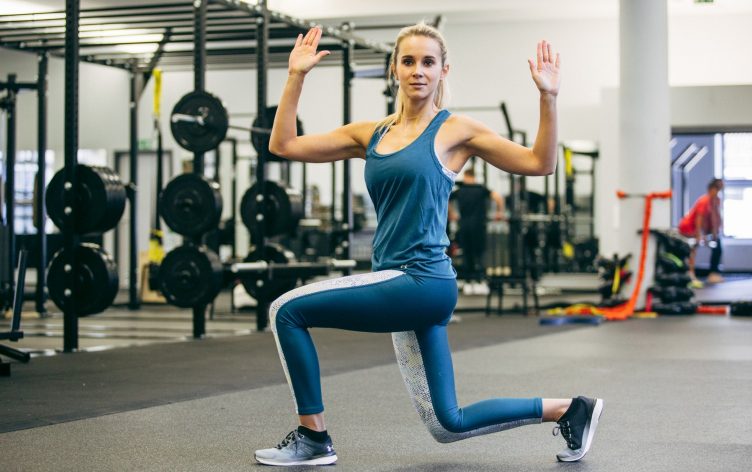
The bodyweight lunge is an exercise meant to help stimulate multiple muscles in the upper leg (and, to some extent, the lower back).
Essentially, what a lunge consists of is taking a step forward, dipping your entire body to the ground — while bending at the knees — to reach the bottom.
This lunging forward position is where you come back up, either returning to your original position on the floor, or stepping forward in a walking lunge.
The “bodyweight” part of the bodyweight lunge is pretty self-explanatory: You have zero additional weight attached to your body.
You’re only using your body’s resistance as you lunge with one leg and then the other.
And while some of you might not think this is too much of a challenge, there are simple alterations you can make to this basic exercise that will have you writhing on the floor in pain.
Bodyweight lunges are only a small piece of an overall calisthenics routine that you can use for strength gain, hypertrophy (muscle gain), and athletic training.
Because it’s so fundamental, it is imperative that you get a solid foundation down for doing these with proper form.
Read Also: Pistol Squat Progressions: Get super strong legs with this one calisthenics exercise
Setting Up For Bodyweight Lunges
A wonderful trait of the bodyweight lunge is its simplicity. Setup is an absolute breeze.
All that you need is space. If you’re doing a walking lunges version, you’ll want around 20 yards of empty floor to walk-lunge down the line and back.
However, if you’re doing standing lunges, where you aren’t moving forward, then you need a circle of room that spans about two yards in dimension.
Aaaand… that’s it. Seriously. That’s the beauty of bodyweight lunges — no weights, no problem.
If you add dumbbells or a barbell, it ceases to be a bodyweight lunge. You add a bench to your back leg and lunge, you’ve turned the lunge into a Bulgarian split squat, a completely different exercise.
The floor in front of you. That’s all you need for the bodyweight lunge.
How Can You Make Bodyweight Lunges Harder?
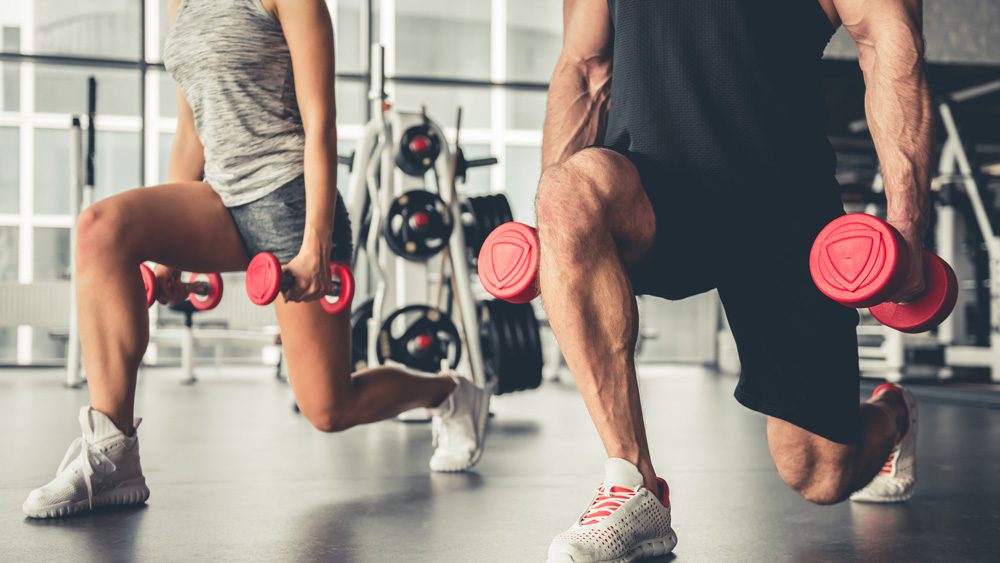
Now, before you go off exclaiming how pathetically EASY bodyweight lunges are, we’re going to give you bodyweight lunge alterations that’ll make you shut your mouth.
For example, try it with slow negatives (i.e., as you’re going down, do so while counting to four seconds).
By stretching out the negative part of the movement — known as the eccentric motion — you fire more neurons, break down more muscle, and feel the exercise harder.
This extra mind-muscle connection will make a ton of difference in how many reps you can do in a given workout, as well as how your body adapts to the volume. (In short, your gains will be bigger and better.)
Another way to make bodyweight lunges more difficult is to include a jump in between the lunges.
This repetition — lunge, jump, lunge, jump — creates an HIIT effect, which is ideal for both metabolic conditioning and overall cardio.
Your heart will be pumping and you’ll be out of breath at the end. (Note: For this variation, it’s best to have a time limit instead of a set number of reps.
That way, you can go full HIIT with the movement.)
One more way you can make this exercise harder is to implement pulses into the bottom of the movement.
So, you’ll lunge like normal, only this time you stay down at the bottom and pulse your entire body up and down, kind of like squat pulses.
Begin by doing bodyweight lunges like normal, then at the end of a set do ten pulses per side. You’ll feel it… trust us.
Bodyweight Lunges Benefits
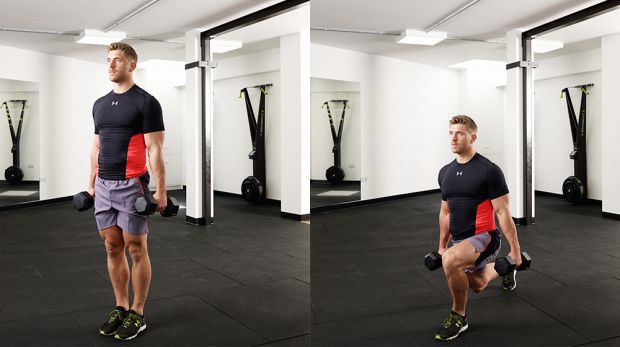
But why even do bodyweight lunges in the first place? Well, there are a lot of advantages to incorporating them consistently in your routine:
- Increased balance: Because you’re stepping forward and bringing your body down without bending, you need to have some semblance of balance to do bodyweight lunges. The more you perform them, the less wobbling you’ll probably notice. That’s due to these lunges improving your overall unilateral balance.
- Improved symmetry: Sticking with the unilateral theme, going one leg at a time provides benefits that a simple squat cannot (unless it’s a pistol squat, smart-aleck). By working each leg separately, you get to develop strength in both without help from the other. This will boost your body’s symmetry, which will aid in your longevity and overall strength.
- Your hip flexors get more… flexible: Anyone who works a desk job knows about hip tightness. With consistent bodyweight lunges, you get to move the muscles and joints that are restricted during long bouts of sitting. This will loosen up your hip flexors, which should alleviate whatever pains you may have in or around your sit bones/hips.
- Zero spinal loading: The beauty of bodyweight lunges — or even dumbbell ones, for that matter — is that it lacks spinal loading. Spinal loading is where you put a ton of weight on the top of your back, compressing your spine (as you would in a back squat). Removing the load from your spine will no doubt help your spine, keeping you clear of injury. At the very least, it gives your spine time to rest and recover.
- Additional core stability: This exercise involves many muscles (as we’ll get into below) and calls for increased support from your core. Additional core stability helps strengthen the abdominal muscles, from the transverse abdominus to your six-pack. And it’s stability strength, which is great for longevity, posture, proper bodily functions, and more.
- Incredibly versatile exercise: You can tweak the bodyweight lunge into anything you want it to be. Whether you go side to side, front to back, slow it down, or speed it up, you can adjust the movement based on your goals and energy levels. And when you change them up, you can still do them…
- Anywhere, anytime: This is why the bodyweight lunge is so versatile. I mean, you could do these on an airplane, for crying out loud. (Though, you’ll get some pretty weird looks.) This strips away any and all excuses you might have had to begin with; now there’s no choice but to do the damn workout. Bodyweight lunges are terrific for adding to a beginner workout to help with the ease of getting into a session and getting it done.
- Builds up everyday function: “Functional” means that you can take what you do in your workout and apply it to everyday life. In the case of the bodyweight lunge, building up your lunge strength will directly correlate to random things like tying your shoes, crouching, and even running. So, if you ever get compliments about your shoe-tying form, you can thank bodyweight lunges for that.
Phew! That’s a ton of benefits for such a straightforward exercise. This is the main reason why bodyweight lunges are so great: You get a lot of output from very little input. Reap the rewards!
Read Also: The Best Calisthenics Books
What Muscles Are Worked Doing Bodyweight Lunges?
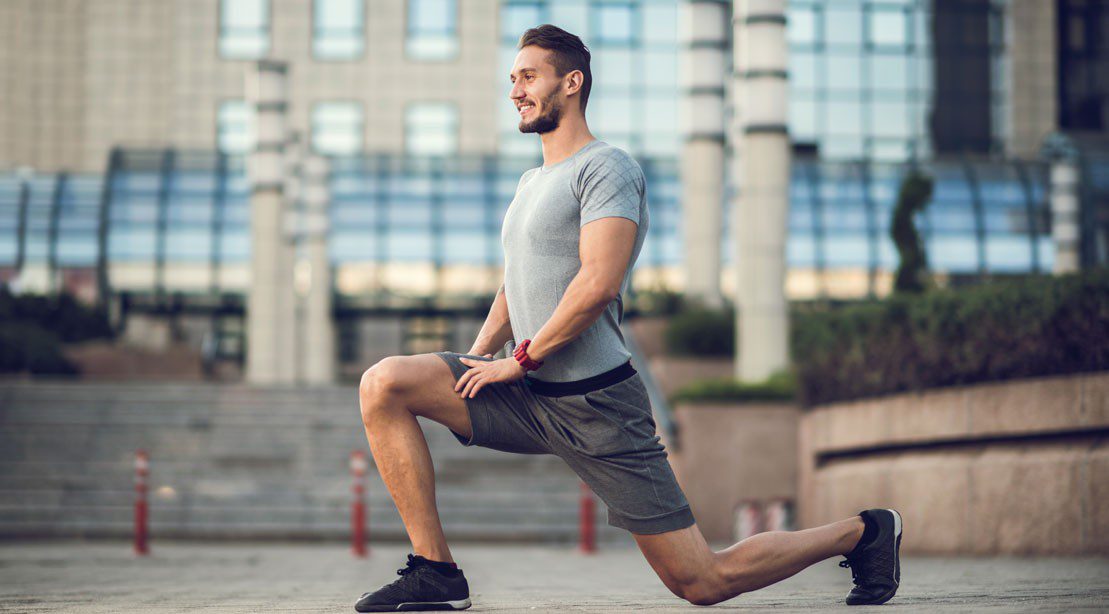
Funny enough, this regular old exercise does a lot for your body, especially in terms of stability muscles and adding flexibility to your lower body.
Bodyweight lunges work a handful of muscles. The main ones are your gluteus maximus, hamstrings, and quadriceps.
Basically, it works out all of your upper leg muscles with great effect. As well, it has a profound effect on other stabilizing muscles, along with your calves, your core, and your lower back.
Plus, there’s some indirect work from your adductor muscles, which reside on the inside of your thighs.
In summary, bodyweight lunges are definitely on the list of the best compound leg exercises available to everybody. That, coupled with its relative ease, makes it the perfect leg movement.
Alternative Exercises for Bodyweight Lunges
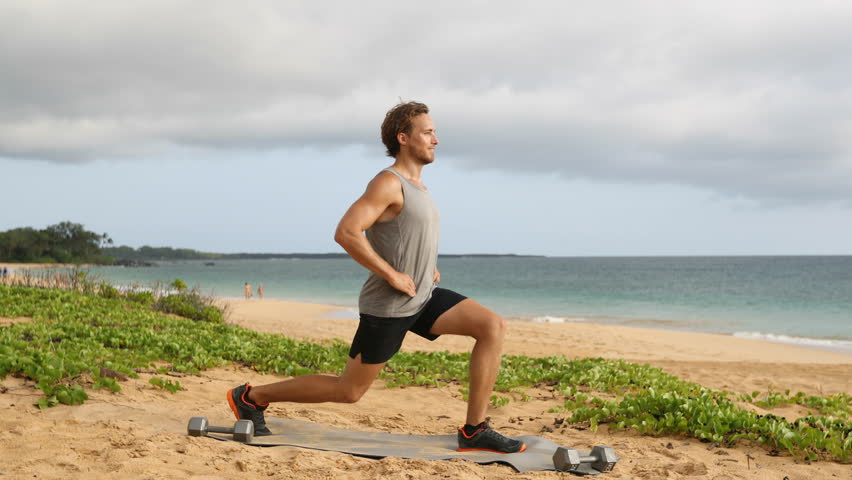
We get it. Sometimes, you just don’t feel like doing bodyweight lunges. That, or your hips are too tight to get into proper position at the bottom.
Never fear! There are plenty of lunge-esque exercises you can do instead:
- Single leg press (involves a leg press machine)
- Bulgarian split squats (involves a bench for your back leg)
- Proprioception lunges (lunging on an uneven surface)
- Step-ups (also involves a bench, but you step up onto it with front foot)
- Chair squats (sitting in a chair at the bottom of the movement)
- Glute bridges (activates the glutes just as well)
- Pistol squats or shrimp squats (you can use assistance with these)
- Jumping step-ups (alternate legs in mid-air)
You don’t have to do bodyweight lunges every day of your life.
You can use any (or all) of these other exercises to activate your glutes, hamstrings, quads, and core.
(For those who are off their rocker, combine a bunch of these into a circuit or HIIT workout of its own… if you dare…)
Conclusion
Now you’re a certified expert in all things bodyweight lunges. (A solid start to an entire calisthenics PhD, if you ask us.)
You know how to set up, rep out, and get stronger on bodyweight lunges, as well as the simple fact that they’re great for your athletic lower body development.
Whether you enjoy yourself some lunges or you prefer to do something similar but different, getting this movement into your regular workout routine will be super beneficial for you.
Best of luck on your Athletic Muscle journey!

